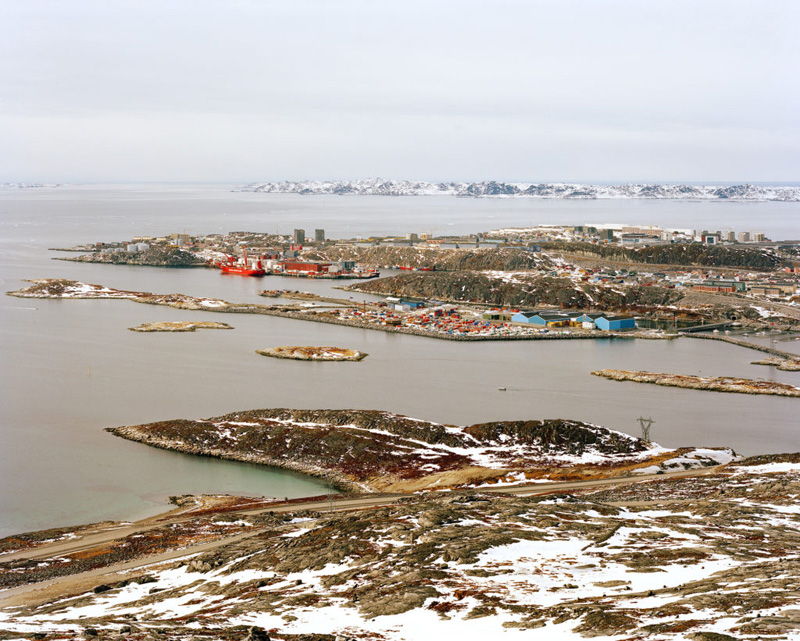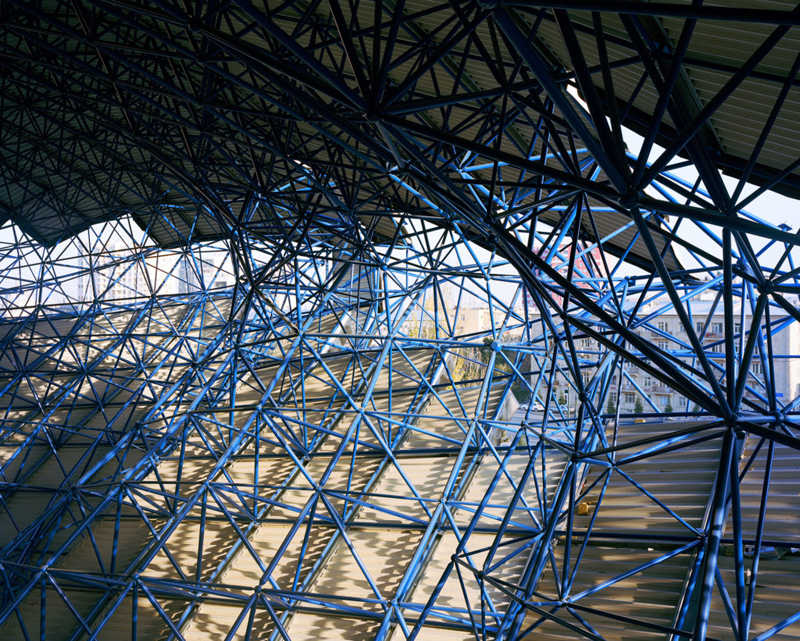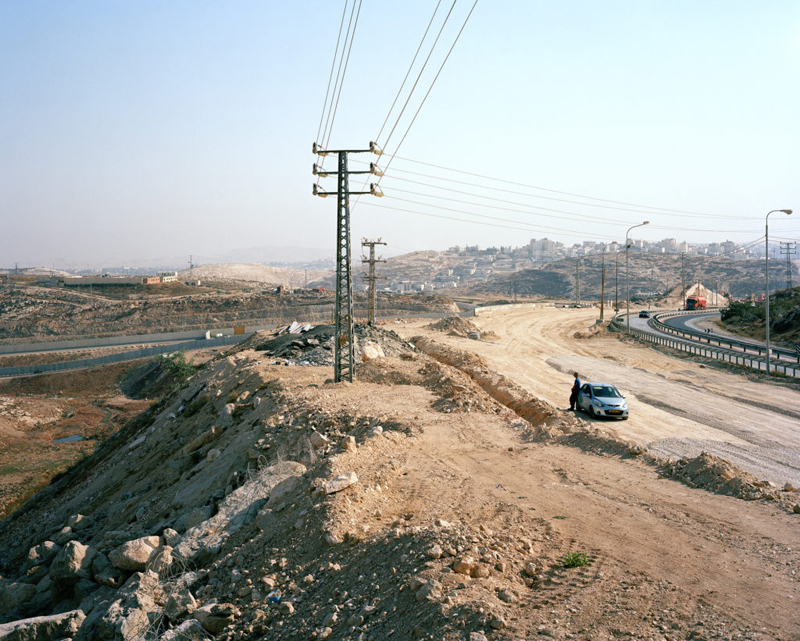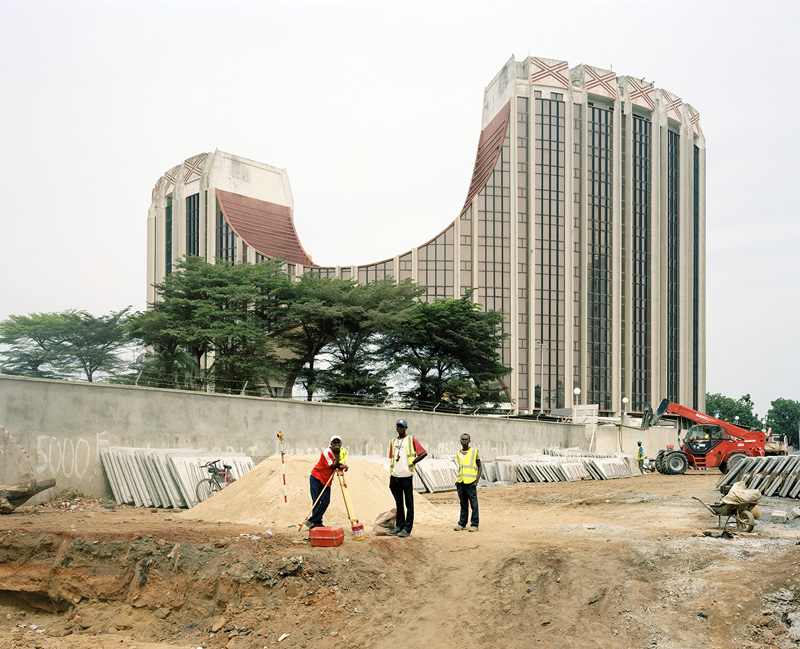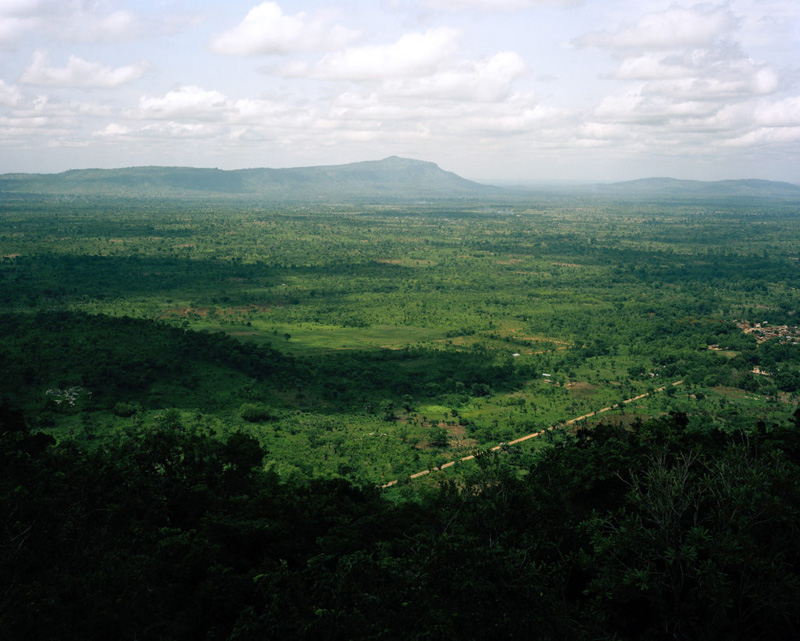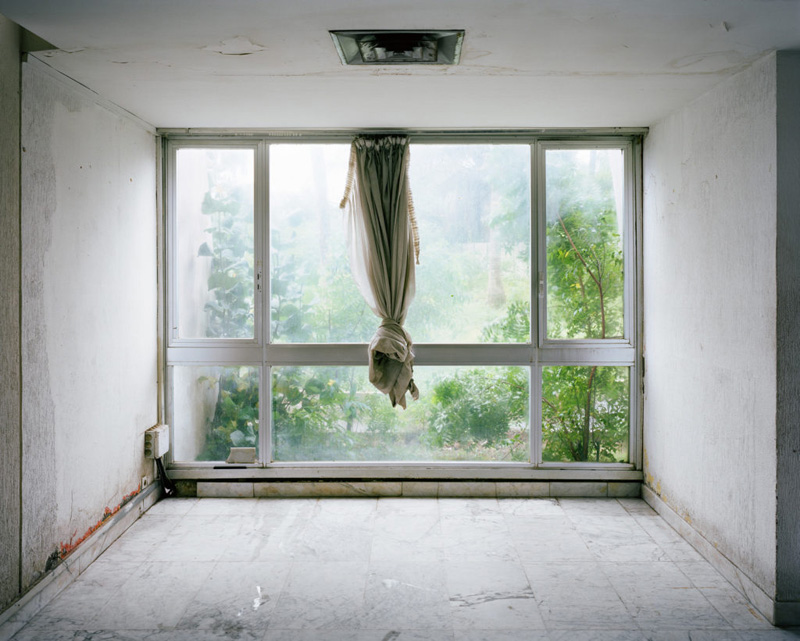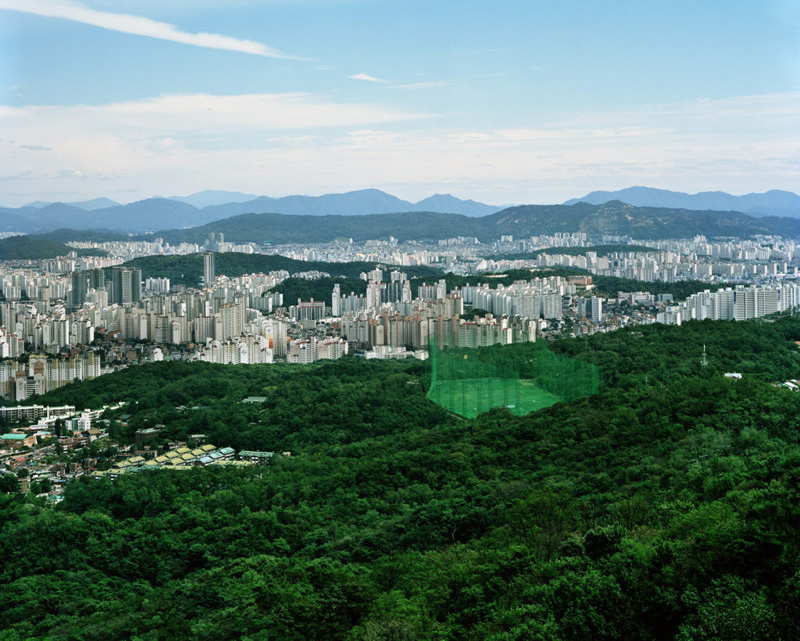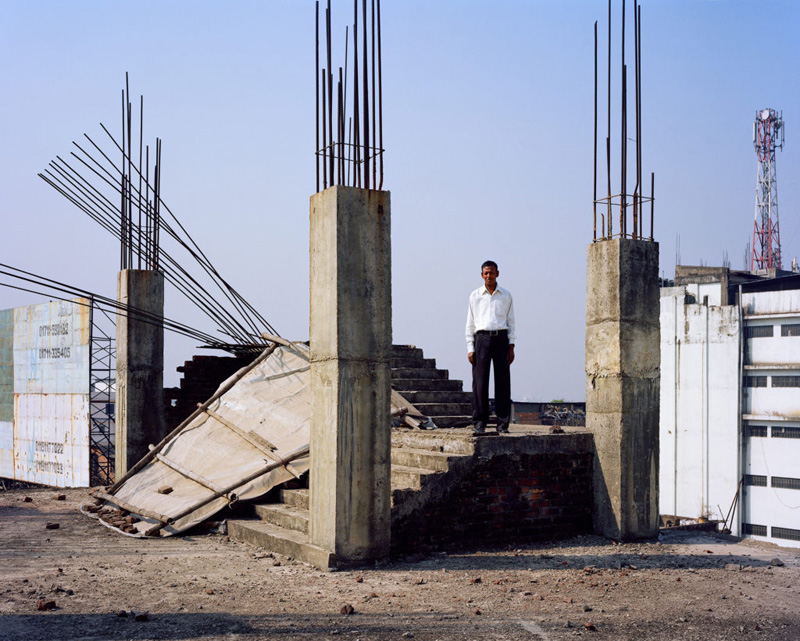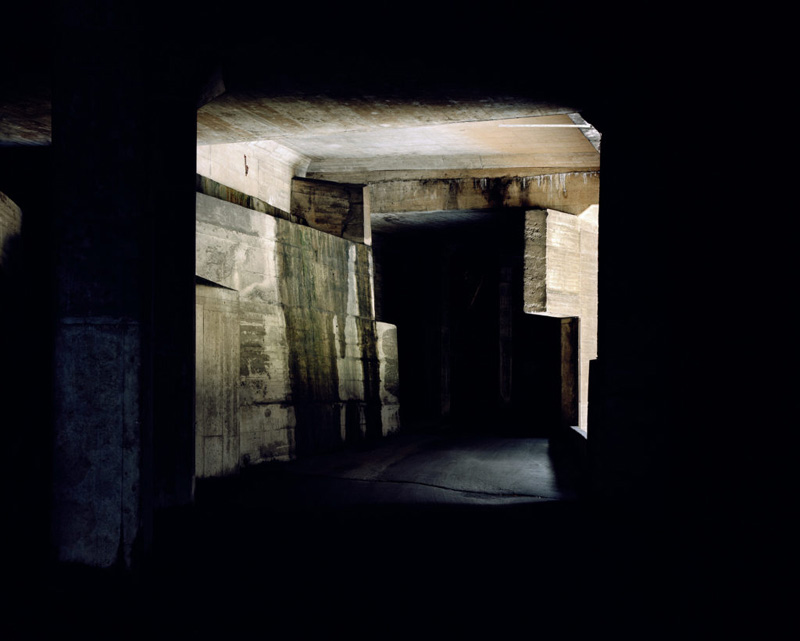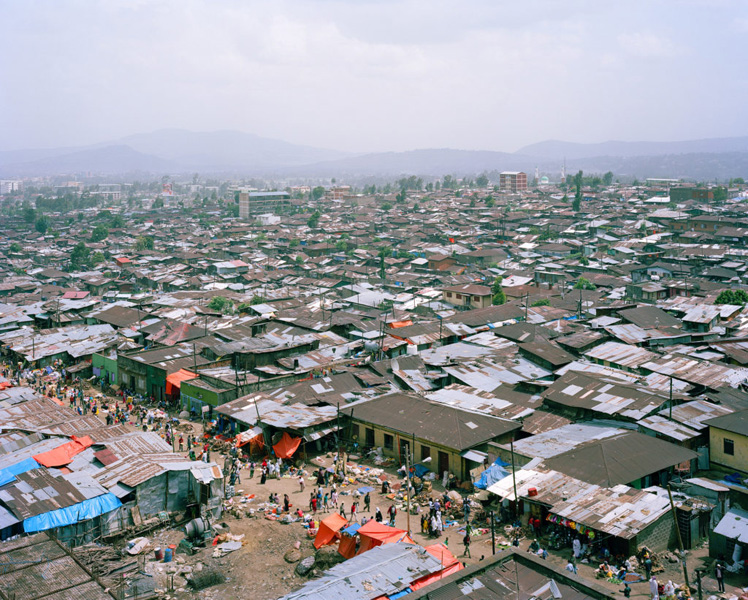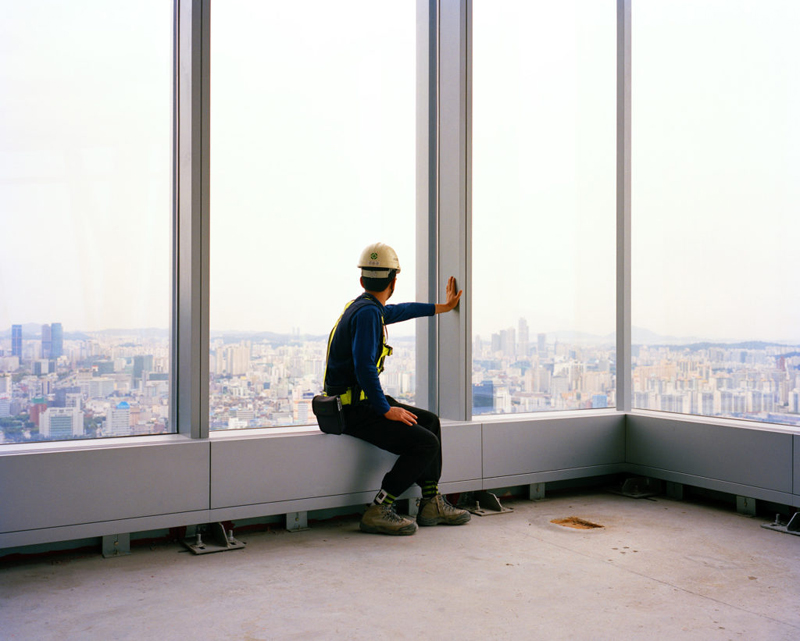
The Photographic ambiguity and the artification of architectural communications
Mathieu Bujnowskyj on Joël Tettamanti
Joël Tettamanti is a Swiss artist and photographer, born in Cameroon and graduated from Ecal in Lausanne. Tettamanti is mainly known for his meticulously composed large format photographs of alpine landscapes and for “local studies” of various remote locations, from african savanna to arctic harbours. If there are generally very few protagonists in the composition […]
Joël Tettamanti is a Swiss artist and photographer, born in Cameroon and graduated from Ecal in Lausanne. Tettamanti is mainly known for his meticulously composed large format photographs of alpine landscapes and for “local studies” of various remote locations, from african savanna to arctic harbours. If there are generally very few protagonists in the composition of Tettamanti’s pictures, the human presence and influence on the environment is a recurrent theme that could be understood in the lineage of the New Topographics exhibition. His images testify moments in the human alteration of environments – construction, utilisation, décrépitude of artefacts or landscapes.
It is interesting to note that Joël kept for a long time two twin websites, tettamanti.ch and tettamanti.li. A white one for his personal projects, and a black one for various commercial works commissioned by architects, international brands and magazines. The present selection of Tettamanti’s photographs is issued from these two collections, mainly from his personal works. In the context of “Mannschaft”, his ambiguous status between independent artist and commissioned photographer allows us to think about the position of artistic photography in the valorisation cycles and communication strategies of contemporary architects.
In an era of speed and digital fluxes, Joël still captures his observations of natural and built environments through large format (4×5) film cameras mounted on tripods.These Traditional and heavy tools that he carries with him around the world, allow him to slow down the photographic process. Even in commissionedprojects, because of low flexibility and very small series, each picture becomes unique and strongly authored by Tettamanti. His workflow has intrinsic qualities and aesthetics that support his peculiar vision on the captured subjects, and differentiate him from many other architectural photographers who work digitally with extended series and options. This phenomenon reinforces his authorial (artistic) status.
From the early days of 20th century, Modernism happened along with the birth of a new kind of Prometheous architects well illustrated for example, by personalities such as Le Corbusier, Mies van der Rohe or, more recently, Rem Koolhaas. Architects presented as charismatic visionaries with ambitious responsibilities for society. These architects understood well the continuous logics between the invested efforts in the development/construction of a building and its presence to the world afterwise.
Architectural communications have developed exponentially with this necessity to valorise as much as possible ideas and built production in order to consolidate architects status. An increasing number of architects started to invite artists and photographers to document the evolution of their projects under construction, and to portray their representation once finished. The images are then used in various publications, such as monographs, magazines, supporting the visibility and the credibility of the architects.
These produced images can both be understood as the representation of an architectural product, as much as an autonomous image supporting an artistic statement where architecture acts only as inspirational subject. The presence of this iconographical duality creates an artification of the architectural communications. It showcases, honestly or not, a supplementary cultural value through artistic collaboration. The reputation and the universe of the commissioned artist or photographer is transferred to the documented building through his production, to the benefit of architects.

